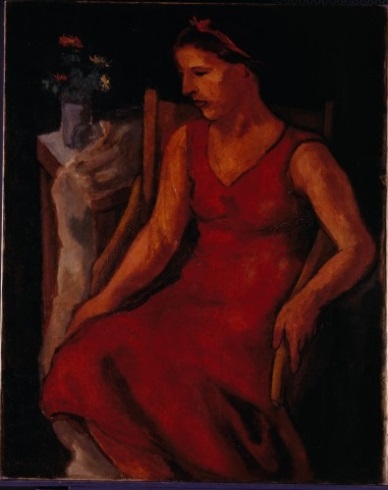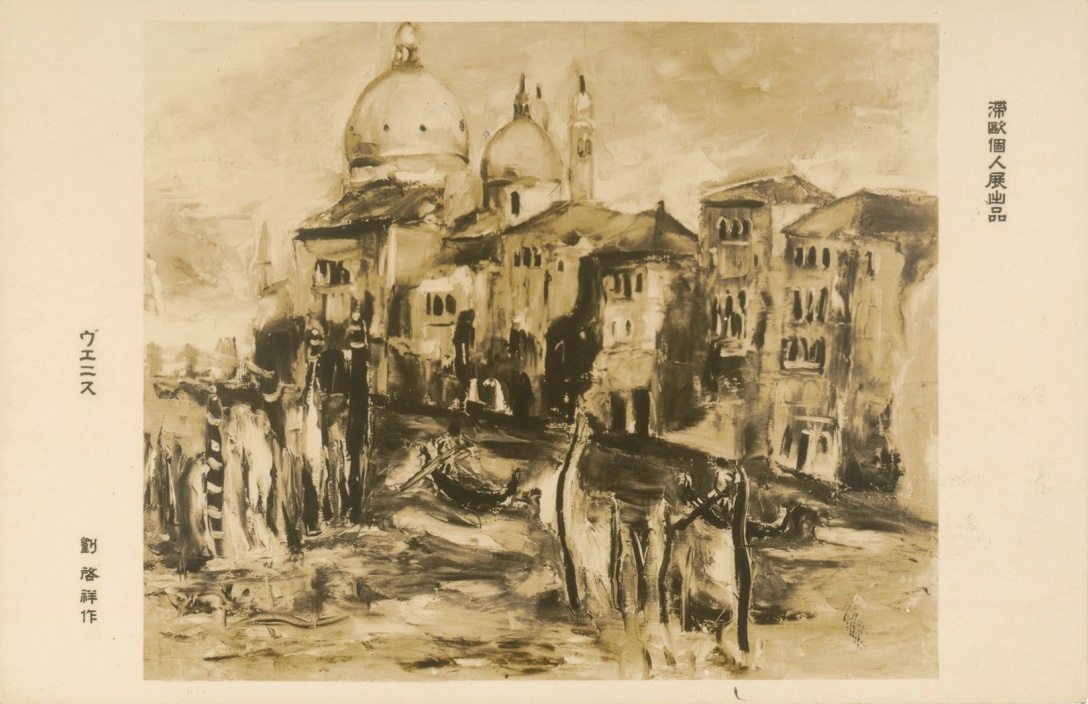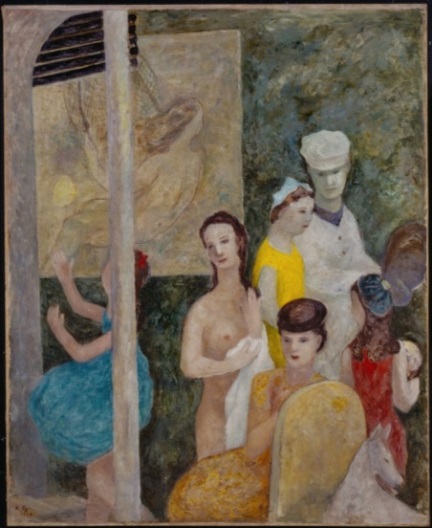 Figure 11: Photograph of Liu Chi-hsiang copying Le Joueur de Fifre in the Louvre in 1934.
Source: Liu Chi-hsiang Painting and Papers Liu Chi-hsiang (1910-1998, see Figure 11) was born to a distinguished family in Liuying, Tainan. After graduating from public elementary school, he entered Aoyama Gakuin University in Japan. He was influenced by an art teacher who had studied in France, and gradually developed an interest in painting. After graduating, he went to Kawabata Painting Institute to continue his studies in painting. After he graduated from Aoyama Gakuin University, he entered the Department of Western Painting in the Cultural College, seeking further training and cultivating his interest in literature and music. In June, 1932, supported by his family, Liu Chi-hsiang and his friend Yang San-lang (1907-1995, born in Taipei, graduated from Kyoto Kansai Art College) took Terukuni Maru to Paris via Hong Kong and Southeast Asia (see Figure 12). After 55 days of sailing, they arrived at the Port of Marseille. Yen Shui-long, who lived in France at that time, came to the port to receive them (see Figure 13).  Figure 12: Liu Chi-hsiang and Yang San-lang’s record from the Registry of Passports in June, 1932.
Source: Identifier: T1011_03_13, Registry of Passports Issued by Taiwan Government-General, Taiwan Archival Information System Description: The registry recorded that Liu Chi-hsiang and Yang San-lang went to France to “research Western Painting.”  Figure 13: When Liu Chi-hsiang (middle) and Yang San-lang (left) first arrived at the Port of Marseille, Yen Shui-long (right) came to receive them and they took a photo together.
Source: Liu Chi-hsiang Painting and Papers From 1932 to 1935, Liu Chi-hsiang copied the late 19th century portraits in the Louvre several times (see Figure 14 & 15). It took him three months to copy Édouard Manet’s (1832-1883) Le Joueur de Fifre (1866) and approximately a half year to copy Olympia (1863). He also copied Paul Cézanne’s (1839-1906) Les Joueurs de cartes (1892-1895) and Pierre-Auguste Renoir’s (1841-1919) Les Baigneuses (1918-1919). He hoped to introduce these legendary paintings to Taiwan. Hence, when imitating the paintings, he required of himself that the elements of size, composition, and color be close to the original paintings.  Figure 14: Passes (Carte d'abonnement pour peindre et dessiner) for entering the Louvre to paint in 1934 and 1935.
Source: Liu Chi-hsiang Painting and Papers Description: The Louvre passes were issued by the Ministère des Beaux-arts. According to the information on the passes, Liu Chi-hsiang used Romanized words “Keissio Ryu” to spell his name. The passes were valid for three months. One was from February 20 to May 19, 1934. The other one was from October 2, 1934 to January 2, 1935. There were stamps for 20 Francs and 25 Centimes on each pass.  Figure 15: Photograph of Liu Chi-hsiang copying Édouard Manet’s Olympia, which he undertook from September, 1934 to February, 1935.
Source: Liu Chi-hsiang Painting and Papers In contrast to Yen Shui-long’s tight study life in Paris, Liu Chi-hsiang lived a leisurely life abroad with family support. Besides copying paintings in museums, he rented a studio beside the Seine, paying models and violin tutors. In 1933, his Red Dress (see Figure 16) was selected for the Autumn Salon in France. Liu Chi-hsiang used black curves to sketch the figure. The girl in the painting is elegant and graceful and the dark background makes her more distinctive. The features in this painting show that Liu Chi-hsiang was influenced by Paul Cézanne and Édouard Manet.  Figure 16: Red Dress, painted by Liu Chi-hsiang in 1933. Oil on Canvas, 91x73cm, private collection.
Source: Liu Chi-hsiang Painting and Papers Liu Chi-hsiang lived in Europe for three years, traveling around Britain, Belgium, and Italy. According to Lin Yu-chun’s research, he stayed for the longest time and experienced the most in Italy. He was particularly impressed by scenes of Venice that contained yellow and orange color tones (see Figure 17).  Figure 17: Venice, painted by Liu Chi-hsiang. This painting was presented in his personal exhibition of his studies in Europe and was printed as a souvenir postcard.
Source: Identifier: CCP_081815_PP017_001, Chen Cheng-po Painting and Papers, Taiwan Archival Information System Description: In March, 1937, Liu Chi-hsiang featured a personal exhibition of studying in Europe in Ginza, Tokyo. He exhibited his paintings in Taipei one month later. The souvenir postcard of Venice was collected by Chen Cheng-po. However, due to inflation and unstable situations, Liu Chi-hsiang ceased his overseas life in France and moved to Tokyo. While living in Japan, he completed oil paintings such as Yellow Dress, Meat Shop, Fish Shop, Studio etc. His Studio was selected for the Nika Art Exhibition in 1939 (see Figure 18). In this painting, his wife wears a yellow dress and sits sideways on a chair, surrounded by a nude girl, a couple, and a girl playing with a ball. These figures, which seem to come from life experiences but also seem unrelated, are put into the same space. Liu Chi-hsiang used a pillar, an arched wall, and a hanging painting to divide the picture, revealing multiple visual and surreal features, delivering a dreamlike feeling.  Figure 18: Studio, painted by Liu Chi-hsiang in 1939. Oil on Canvas, 162x130cm, private collection.
Source: Liu Chi-hsiang Painting and Papers |
 |



